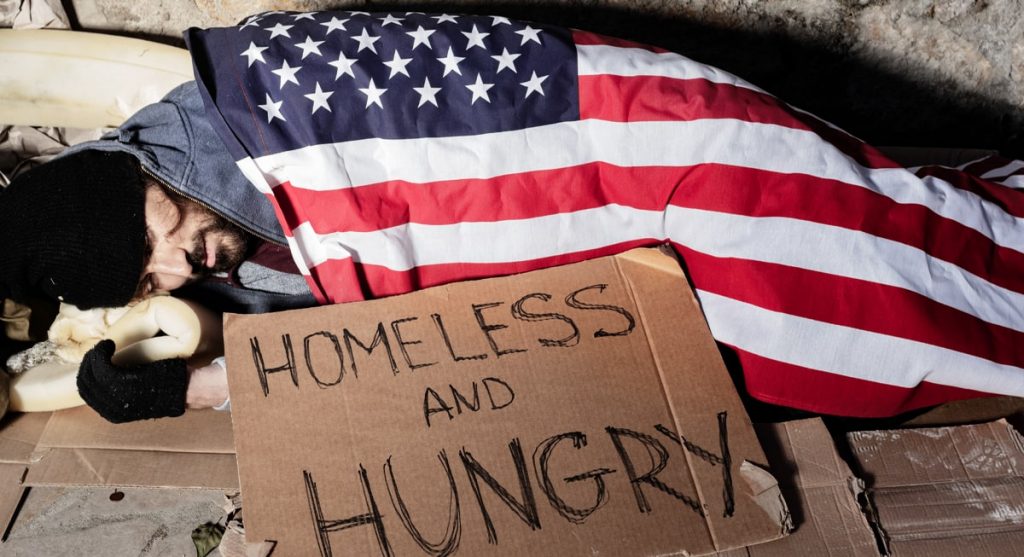The cost of living crisis is leaving nothing untouched. Car insurance premiums are soaring across the U.S., reflecting a complex blend of factors from traffic congestion to theft rates. Here’s a closer look at the cities facing the steepest increases in auto insurance costs:
Los Angeles, California
The City of Angels is notorious for its dense traffic and high vehicle theft rates, with over 80,000 thefts reported in 2022, according to the Los Angeles Police Department. With a population exceeding 4 million, these factors combine to create a high-risk environment for insurers, leading to escalating insurance premiums that reflect the heightened risk.
Tampa, Florida
Tampa drivers contend with some of the highest insurance rates in Florida, exacerbated by the city’s vulnerability to hurricanes and flooding, as reported by a 2023 Tampa Bay Times article. These natural events frequently damage vehicles, leading to higher comprehensive insurance claims. The city’s growing population and tourist influx further contribute to congested roads and a higher incidence of accidents, pushing premiums upward.
Cleveland, Ohio
Cleveland faces a unique set of challenges that drive up insurance costs, including severe winter weather conditions that lead to icy roads and increased accident rates. A 2023 report by WKYC indicates that the city’s economic conditions also play a role, with a higher-than-average rate of uninsured motorists compared to other U.S. cities. This combination of factors results in a higher risk profile for insurers, reflected in Cleveland’s auto insurance premiums.
Minneapolis, Minnesota
Minneapolis is known for its harsh winters, which include heavy snowfall and icy conditions, leading to a higher frequency of auto accidents during the cold months. According to a 2023 report by the Star Tribune, the city also has a dense urban layout that contributes to frequent vehicle collisions. Additionally, Minnesota’s no-fault insurance law requires drivers to carry personal injury protection, which can increase the overall cost of insurance policies in Minneapolis.
Detroit, Michigan
Despite a decline in car thefts, Detroit contends with a significant number of uninsured drivers—over 20% as of 2023, according to the Detroit Free Press. This contributes to a higher frequency of hit-and-run incidents and financial losses for insured drivers, necessitating higher premiums to cover the increased risk.
Miami, Florida
Florida has some of the highest auto insurance rates in the country, with drivers in Miami paying well above the state average, which exceeds $3,100 annually, as reported by NerdWallet in 2023. Factors such as Miami’s high accident rates and heavy tourist traffic exacerbate the situation, pushing premiums even higher.
New Orleans, Louisiana
This city’s insurance rates are impacted by Louisiana’s high uninsured motorist rate—over 13% according to a 2022 report from the Insurance Information Institute (III)—and frequent flooding, which leads to costly vehicle repairs and replacements, further inflating insurance costs.
Atlanta, Georgia
Ranked among the top 10 most congested cities in the U.S. by a 2023 WSB-TV report, Atlanta’s sprawling metropolitan area sees a high volume of traffic accidents, leading to increased insurance claims and, consequently, higher premiums for its drivers.
San Francisco, California
Similar to its southern counterpart, Los Angeles, San Francisco deals with a dense population, significant traffic congestion, and a high rate of car break-ins—over 24,000 in 2022, as per SFPD reports. These factors make for a risky insurance landscape, reflected in the city’s costly premiums.
New York City, New York
The complexities of insuring a car in NYC include rising car theft rates, with over 10,000 incidents in the first half of 2023 alone, according to The Zebra, as well as the additional costs associated with parking and garaging vehicles in the city. These elements combine to drive up the cost of auto insurance significantly.
Chicago, Illinois
Chicago’s harsh winters contribute to a high rate of weather-related accidents, making it one of the top U.S. cities for winter driving mishaps, as per a 2023 WGN-TV report. This weather-induced risk results in more claims and higher insurance premiums for local drivers.
Houston, Texas
While Texas generally enjoys lower-than-average insurance rates, Houston is an exception due to its vast size and high rate of uninsured drivers—over 15%, according to a 2022 Texas Department of Insurance report. These factors contribute to a riskier driving environment and higher premiums.
Baltimore, Maryland
With auto thefts exceeding 18,000 in 2022 and an uninsured driver rate over 17%, as reported by the III in 2023, Baltimore’s drivers face significant risks that are reflected in their insurance premiums.
Seattle, Washington
Long commute times in Seattle—over 30 minutes on average, exceeding national figures as per a 2023 report from The Seattle Times—along with challenging weather conditions, contribute to frequent accidents and higher insurance costs.
Phoenix, Arizona
Despite its wide, driver-friendly roads, Phoenix’s extreme climate and increasing instances of distracted driving—highlighted in a 2023 report by the Arizona Department of Transportation—lead to frequent vehicle wear and tear and a rise in accidents, pushing up insurance rates.
Philadelphia, Pennsylvania
Philadelphia struggles with aggressive driving and a high number of uninsured motorists—over 14%, according to a 2022 PennDOT report. These issues lead to more accidents and higher financial burdens for insured drivers, reflected in rising insurance costs.
Denver, Colorado
As Denver’s population grows, so does its traffic congestion. Now ranking in the top 20 most congested cities in the U.S., according to a 2023 Denver Post report, the increased road traffic leads to more accidents and, consequently, higher auto insurance premiums.
Portland, Oregon
Portland’s unique geographic and climatic conditions contribute to its challenging driving environment. Frequent rain and fog lead to slick roads and reduced visibility, increasing the likelihood of accidents. As per a 2023 report by KOIN, Portland also has a high rate of bicyclists and pedestrians, which complicates traffic scenarios further and leads to more insurance claims, thereby increasing premiums for local drivers.
San Diego, California
Known for its beautiful weather and extensive freeway systems, San Diego still faces significant insurance rate challenges, primarily due to its proximity to the Mexican border. This geographical factor increases the risk of car thefts and uninsured drivers, a problem highlighted in a 2023 report by the San Diego Union-Tribune. Moreover, the high cost of living in the area adds to the overall expense of car ownership, including insurance premiums.



